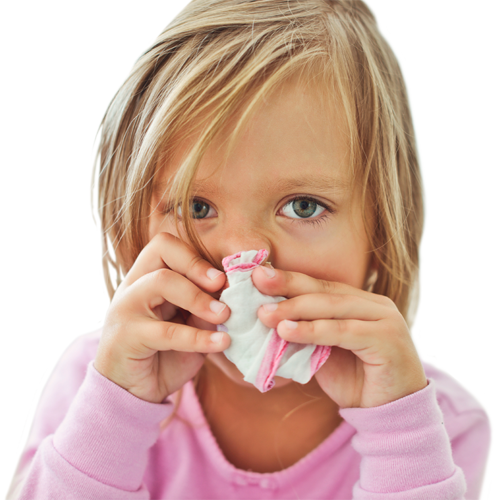Common in early childhood, fifth disease is usually mild, and appropriate care can provide relief for affected children.
What is fifth disease?
Fifth disease is a generally mild viral infection caused by the parvovirus B19. It occurs mainly in children between the ages of 5 and 15, but can also affect younger children and adults. Once the infection is resolved, the affected person is considered to be immune (protected) for life.
Fifth disease is contagious. It can be contracted the same way as the common cold virus, that is:
- by putting one's fingers in one's mouth after touching an infected person or an object contaminated by an infected person
- by breathing in droplets that were projected into the air by an infected person through coughing or sneezing
Signs and symptoms usually appear from 4 to 14 days after infection, sometimes more. Everyone infected by the fifth disease virus is contagious for a few days before the onset of the rash typical of the disease. The infectious period ends as soon as the skin rash is visible.
What are the signs and symptoms of fifth disease?
Initial symptoms of fifth disease are often confused with other illnesses such as the common cold:
- low-grade fever
- headache
- nasal congestion
- runny nose, and
- stomach ache
Then, a reddish rash appears, giving the impression that the child has been slapped on the cheeks. The rash spreads to the arms, torso, and the rest of the body. It causes itching and typical symptoms include red plaques resembling lace.
The intensity of symptoms varies from person to person. In some cases, the infection goes unnoticed or is mistaken for a cold. Fifth disease is usually mild, but it can be more severe in some people:
- children with anemia
- adults
- individuals with a weakened immune system, and
- pregnant women
How can signs and symptoms of fifth disease be relieved?
There is no treatment for fifth disease. The infection must follow its course. However, measures can be taken to ease symptoms.
- Give your child plenty of fluids.
- Encourage them to rest.
- Use acetaminophen to relieve fever and pain. It is important to avoid aspirin (acetylsalicylic acid) or any product containing aspirin.
- Use cold compresses to relieve itching.
- Add colloidal oatmeal powder to bath water, as it also relieves itching.
- Have your child wear light, soft clothing. Avoid coarse fabrics.
- Keep your child's fingernails clean and short and have them wear gloves at night to avoid scratching.
Some creams and lotions available at the pharmacy can also be useful. Your pharmacist can guide you in choosing the most appropriate product.
When should you see a doctor?
Although it is a mild viral infection, fifth disease can be more serious in some people, as mentioned above. It is necessary to see a doctor under the following circumstances:
- in the presence of a high fever (over 38.9oC)
- in the presence of joint pain
- if your child has anemia, and
- if your child's immune system is weakened
Pregnant women who are not immunized against fifth disease can pass the virus to their baby. In some cases, complications can occur. Therefore, it is important for pregnant women to see a doctor if they present signs and symptoms after coming into contact with an infected person.
How can fifth disease be prevented?
Some basic measures help to protect children:
- Ask them to wash their hands regularly, especially if they have just coughed, sneezed or blown their nose.
- Teach them to sneeze or cough into a tissue or in the crook of their elbow.
- Disinfect surfaces that may have been contaminated by an infected person with an alcohol-based cleaner.
- Avoid contact with an infected person during the infectious period.
How can your pharmacist help?
If you think your child or someone around you has fifth disease, your pharmacist can direct you to the appropriate resources depending on the situation. In some cases, a medical visit is necessary. Your pharmacist will also answer your questions about this illness and infection control measures.
There are many ways to relieve the symptoms of fifth disease without a doctor’s prescription. Your pharmacist will be able to advise you.

